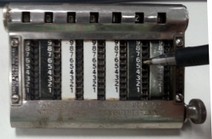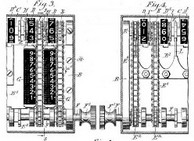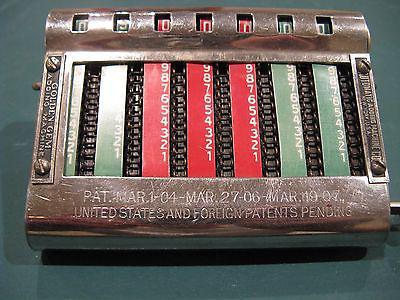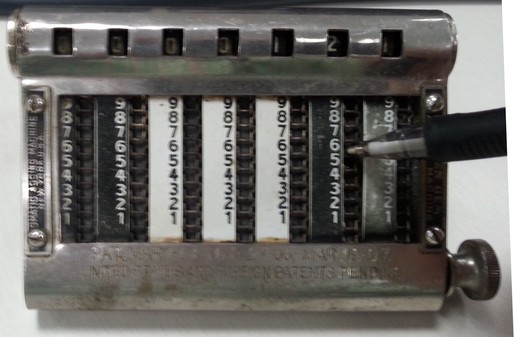Virtual Museum > The early ones > Chain adders
GEM : Chain adder



The most common within the chain type adding machines, and maybe the cheaper too, was the GEM.
It was designed by Nobyoshi Kodama and Abraham Gancher, and we can find a patent as soon as 1904:
 Patent 753586 from 1904
Patent 753586 from 1904The original model was more of a desktop item as the stand was solid, as seen on this ad from 1906:
Several models were patented between 1904 and 1907 and sold easily in the US with a price of $10. However, remember that $10 in 1907 would be the equivallent of $270 today. As the average wage was around 22 cents an hour, this would still represent about 40 hours of work to acquire this little machine.
Later we also found some models with 9 columns, which allowed the user to add amounts up to 9999999.99
here is one that was for sale recently:
I found a couple of 8-columns models

And even a model with colors

Well constructed little machines, and easy to operate, as the carry over was automatic. You simply have to enter the number you want to add. The regular Adders were not carrying over.
They came in several types, wiith 7 8 or 9 columns. I saw a mention of some models with non-decimal scales, such as inches or feet.
The ones in my collection are simple 7 column model, but still works very well, after over a century.
A late patent from the same inventor shows a different machine, with more complex registers. I am not sure this one was ever sold:
A late ad in the paper (Popular mechanics 1925) shows that there were more than 200,000 of these machines sold. Most likely they continued to sell for a while because of the facility of use and cheap price.
Although in the same magazine (still 1925) you had a better deal with the VE-PO-AD (short for Vest Pocket Add)
Here is an overview on how to operate the regular GEM:
Using a stylus or pen, push the numbers you want to select down. In the example above, I select 6 and I push it down all the way to the bottom.
Example of an addition, first number entered : 56

Second number added : 65. The result is given : 121. The carry over of the hundreds was automatic

To reset all numbers to zero, rotate the knob on the bottom right.
Here are a couple of short videos to show how to use this device and different versions of it.
Your browser must support HTML5 or Adobe Flash™
This page has been seen
times since August 2015
